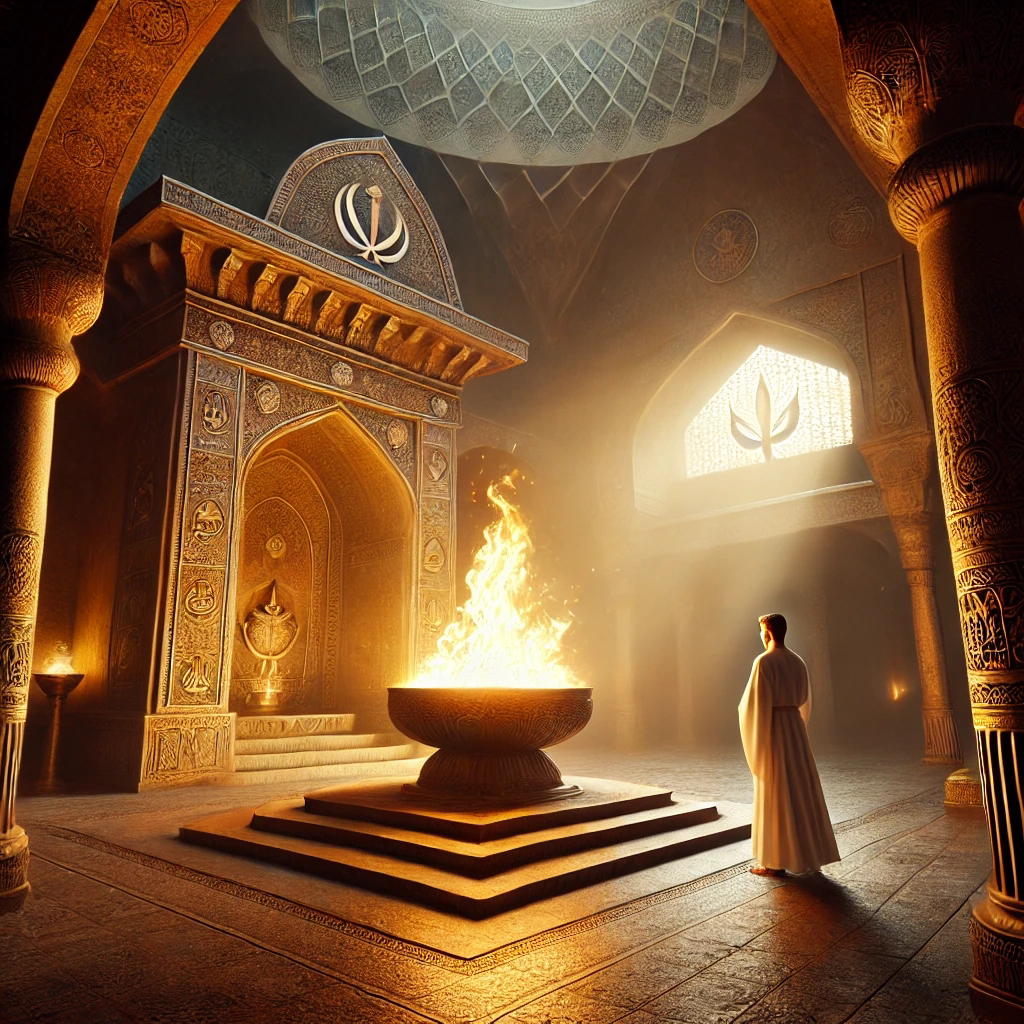Zoroastrianism is one of the world’s oldest known religions, yet few people today truly understand its influence. It predates Christianity, Islam, and even Buddhism, with roots stretching back to at least 1200 BCE. Despite its small following today, its ideas have shaped major world religions and philosophical thought. If you’ve ever pondered the battle between good and evil, you’ve already engaged with Zoroastrian concepts.
Who Was Zoroaster?
Zoroastrianism is named after its founder, Zoroaster (or Zarathustra), a prophet and spiritual reformer. He is believed to have lived in ancient Persia, though scholars debate whether he existed around 1200 BCE or closer to 600 BCE. Unlike other religious figures, Zoroaster wasn’t just a mystic—he was a radical thinker who challenged the polytheistic traditions of his time. His teachings formed the foundation of what would become a monotheistic faith centered on one supreme deity: Ahura Mazda.
The Core Beliefs of Zoroastrianism
At its core, Zoroastrianism is a religion of duality. The world is a battleground between good and evil, truth and lies, light and darkness. Ahura Mazda represents goodness, wisdom, and order, while Angra Mainyu (or Ahriman) embodies chaos and destruction. Humans are expected to choose between these forces through their thoughts, words, and deeds.
Free Will and Moral Responsibility
Unlike some deterministic belief systems, Zoroastrianism places a heavy emphasis on free will. Every individual has the power to choose between righteousness (asha) and deception (druj). This makes ethics central to Zoroastrian practice—good actions bring one closer to Ahura Mazda, while evil leads to spiritual corruption. It’s not just about personal salvation but about maintaining cosmic balance.
The Sacred Texts: The Avesta
Zoroastrian teachings are recorded in the Avesta, the religion’s holy book. The most ancient and revered part of this text is the Gathas, hymns believed to be composed by Zoroaster himself. The Avesta also contains prayers, rituals, and laws guiding followers in their daily lives. Though much of the original text has been lost over centuries, what remains provides insight into one of humanity’s earliest structured belief systems.
The Concept of Afterlife
Zoroastrians believe in judgment after death. Souls are assessed at the Chinvat Bridge, which determines their fate based on their earthly deeds. The righteous cross safely into paradise, while the wicked fall into a place of suffering. However, this isn’t an eternal damnation—Zoroastrianism ultimately envisions a future restoration where all souls are purified, and evil is defeated for good.
Influence on Other Religions
Many ideas that appear in Judaism, Christianity, and Islam have parallels in Zoroastrianism. The concepts of a singular god, a cosmic struggle between good and evil, heaven and hell, and an apocalyptic savior can all be traced back to Zoroastrian teachings. Some scholars argue that Jewish thought absorbed Zoroastrian ideas during the Babylonian exile, influencing the development of later Abrahamic religions.
Rituals and Practices
Fire is a central symbol in Zoroastrian worship, representing purity and divine presence. Fire temples, where sacred flames burn continuously, are key places of religious devotion. Prayer and ritual cleanliness are essential, with an emphasis on truthfulness and ethical living. Unlike some religious traditions, Zoroastrians do not practice proselytization, meaning the faith has largely remained within hereditary lines.
Decline and Survival
Zoroastrianism was once the dominant religion of the Persian Empire, but it faced major setbacks with the rise of Islam in the 7th century. Persecution and forced conversions led to a dramatic decline. Today, small communities of Zoroastrians, known as Parsis and Iranis, primarily live in India and Iran. Despite their small numbers, they have maintained their traditions for centuries.
Modern Challenges and Revival Efforts
The Zoroastrian population is shrinking due to low birth rates, interfaith marriages, and a lack of converts. Some reformist movements are pushing for more inclusivity, while traditionalists insist on preserving lineage-based membership. In recent years, there has been renewed global interest in Zoroastrianism, particularly among scholars and spiritual seekers. Its message of ethical living, environmental consciousness, and free will remains relevant in today’s world.
Why Zoroastrianism Still Matters
Zoroastrianism may be ancient, but its principles still resonate. The battle between truth and deceit, good and evil, remains a central theme in human life. Its ideas have shaped the moral foundations of societies and continue to inspire those who seek a deeper understanding of their place in the universe. Whether or not one follows its teachings, Zoroastrianism’s impact on world history is undeniable.
Stay curious.




